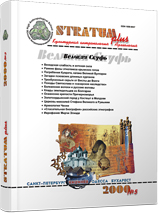Становление культуры псковских длинных курганов
Development of the Culture of Pskov Long Mounds
Author(s): Valentin V. SedovSubject(s): History, Archaeology, Middle Ages, 6th to 12th Centuries
Published by: Издательский дом Stratum, Университет «Высшая антропологическая школа»
Summary/Abstract: The article studies the problem of origin and development of the archaeological culture of Pskov long burial mounds, which were spread from middle I millennium AD in the forest zone in the west of Eastern Europe (modern Novgorod and Pskov Oblast’ of the Russian Federation). The early stage of this culture is associated with the first appearance of a big number of finds of Central European provincial Roman origin on this territory. Compared to other researchers, the author connects the origin of the culture of Pskov long burial mounds with a strong eastward migration flow of Wielbark and Przewor cultures of the Vistula basin, rather than with the local Baltic-Finnish population. There were Germans, Slavs and Balts among the migrants; however, the culture of Pskov long burial mounds was primarily Slavic, though it included, especially on periphery, local Finnish elements. The author supports his hypothesis with linguistic and toponimic data.
Journal: Stratum plus. Археология и культурная антропология
- Issue Year: 2000
- Issue No: 5
- Page Range: 26-31
- Page Count: 6
- Language: Russian
- Content File-PDF

